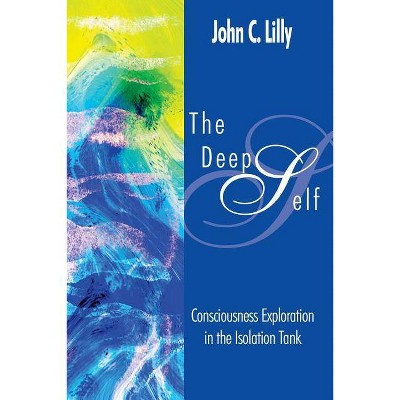Psychosis, Trauma and Dissociation - 2nd Edition by Andrew Moskowitz & Martin J Dorahy & Ingo Schäfer (Hardcover)

Similar Products
Products of same category from the store
AllProduct info
<p/><br></br><p><b> About the Book </b></p></br></br>"An invaluable sourcebook on the complex relationship between psychosis, trauma, and dissociation, thoroughly revised and updated This revised and updated second edition of Psychosis, Trauma and Dissociation offers an important resource that takes a wide-ranging and in-depth look at the multifaceted relationship between trauma, dissociation and psychosis. The editors - leaders in their field - have drawn together more than fifty noted experts from around the world, to canvas the relevant literature from historical, conceptual, empirical and clinical perspectives. The result documents the impressive gains made over the past ten years in understanding multiple aspects of the interface between trauma, dissociation and psychosis. The historical/conceptual section clarifies the meaning of the terms dissociation, trauma and psychosis, proposes dissociation as central to the historical concepts of schizophrenia and borderline personality disorder, and considers unique development perspectives on delusions and the onset of schizophrenia. The empirical section of the text compares and contrasts psychotic and dissociative disorders from a wide range of perspectives, including phenomenology, childhood trauma, and memory and cognitive disturbances, whilst the clinical section focuses on the assessment, differential diagnosis and treatment of these disorders, along with proposals for new and novel hybrid disorders. This important resource: Offers extensive updated coverage of the field, from all relevant perspectives; Brings together in one text contributions from scholars and clinicians working in diverse geographical and theoretical areas; Helps define and bring cohesion to this new and important field; Features nine new chapters on: conceptions of trauma, dissociation and psychosis, PTSD with psychotic features, delusions and memory, trauma treatment of psychotic symptoms, and differences between the diagnostic groups on hypnotizability, memory disturbances, brain imaging, auditory verbal hallucinations and psychological testing. Written for clinicians, researchers and academics in the areas of trauma, child abuse, dissociation and psychosis, but relevant for psychiatrists, psychologists and psychotherapists working in any area, the revised second edition of Psychosis, Trauma and Dissociation makes an invaluable contribution to this important evolving field"--<p/><br></br><p><b> Book Synopsis </b></p></br></br><p><b>An invaluable sourcebook on the complex relationship between psychosis, trauma, and dissociation, thoroughly revised and updated</b></p> <p>This revised and updated second edition of <i>Psychosis, Trauma and Dissociation</i> offers an important resource that takes a wide-ranging and in-depth look at the multifaceted relationship between trauma, dissociation and psychosis. The editors - leaders in their field - have drawn together more than fifty noted experts from around the world, to canvas the relevant literature from historical, conceptual, empirical and clinical perspectives. The result documents the impressive gains made over the past ten years in understanding multiple aspects of the interface between trauma, dissociation and psychosis. </p> <p>The historical/conceptual section clarifies the meaning of the terms dissociation, trauma and psychosis, proposes dissociation as central to the historical concepts of schizophrenia and borderline personality disorder, and considers unique development perspectives on delusions and the onset of schizophrenia. The empirical section of the text compares and contrasts psychotic and dissociative disorders from a wide range of perspectives, including phenomenology, childhood trauma, and memory and cognitive disturbances, whilst the clinical section focuses on the assessment, differential diagnosis and treatment of these disorders, along with proposals for new and novel hybrid disorders. This important resource: </p> <p>- Offers extensive updated coverage of the field, from all relevant perspectives</p> <p>- Brings together in one text contributions from scholars and clinicians working in diverse geographical and theoretical areas</p> <p>- Helps define and bring cohesion to this new and important field</p> <p>- Features nine new chapters on: conceptions of trauma, dissociation and psychosis, PTSD with psychotic features, delusions and memory, trauma treatment of psychotic symptoms, and differences between the diagnostic groups on hypnotizability, memory disturbances, brain imaging, auditory verbal hallucinations and psychological testing</p> <p>Written for clinicians, researchers and academics in the areas of trauma, child abuse, dissociation and psychosis, but relevant for psychiatrists, psychologists and psychotherapists working in any area, the revised second edition of <i>Psychosis, Trauma and Dissociation</i> makes an invaluable contribution to this important evolving field.</p><p/><br></br><p><b> From the Back Cover </b></p></br></br><p><b>An invaluable sourcebook on the complex relationship between psychosis, trauma and dissociation, thoroughly revised and updated.</b> <p>This revised and updated second edition of <i>Psychosis, Trauma and Dissociation</i> offers an important resource that takes a wide-ranging and in-depth look at the multifaceted relationship between trauma, dissociation and psychosis. The editors -- leaders in the field -- have drawn together more than fifty noted experts from around the world, to canvas the relevant literature from historical, conceptual, empirical and clinical perspectives. The result documents the impressive gains made over the past ten years in understanding multiple aspects of the interface between trauma, dissociation and psychosis. <p>The historical/conceptual section clarifies the meaning of the terms dissociation, trauma and psychosis, proposes dissociation as central to the historical concepts of schizophrenia and borderline personality disorder, and considers unique development perspectives on delusions and the onset of schizophrenia. The empirical section of the text compares and contrasts psychotic and dissociative disorders from a wide range of perspectives, including phenomenology, childhood trauma, and memory and cognitive disturbances while the clinical section focuses on the assessment, differential diagnosis and treatment of these disorders, along with proposals for new and novel hybrid disorders. <p>Written for clinicians, researchers and academics in the areas of trauma, child abuse, dissociation and psychosis, but relevant for psychiatrists, psychologists and psychotherapists working in any area, the revised second edition of <i>Psychosis, Trauma and Dissociation</i> makes an invaluable contribution to this important evolving field.<p/><br></br><p><b> Review Quotes </b></p></br></br><br><p><i>"<i>This volume is highly recommended to clinicians and researchers as an excellent resource of contemporary thinking in understanding some of the many complex ways that individuals respond to traumatic experiences</i>" <br />- Pamela R. Fuller, Fronteir Psychological Associates<br /><br />PTD </i>includes outstanding contributions from international experts and provides a comprehensive view of its topics, particularly with respect to conceptual and research issues. The editors have interspersed throughout the book parentheses leading the reader to other related chapters, but a summarizing contribution would have been welcome. That small qualm notwithstanding, <i>PTD </i>is essential reading for anyone wanting to understand how trauma, dissociation, and psychosis both converge and diverge. (Journal of Trauma and Dissociation, July 2020)</p><br><p/><br></br><p><b> About the Author </b></p></br></br><p><b>The Editors</b> <p><b>Andrew Moskowitz, PhD, </b> Professor of Psychology, Dean of Undergraduate Programs, Touro College Berlin, Berlin, Germany. <p><b>Martin J. Dorahy, PhD, </b> Professor of Psychology, University of Canterbury, Christchurch, New Zealand. <p><b>Ingo Schäfer, MD, MPH, </b> Professor, Department of Psychiatry and Psychotherapy, University Medical Center Hamburg-Eppendorf, University of Hamburg, Hamburg, Germany. <p>The painting on the front cover, <i>Composition VI, </i> was created by Wassily Kandinsky in 1913. Inspired by the Biblical story of the Great Flood, Kandinsky drew on themes of destruction and rebirth in developing these images.
Price History
Price Archive shows prices from various stores, lets you see history and find the cheapest. There is no actual sale on the website. For all support, inquiry and suggestion messagescommunication@pricearchive.us



















